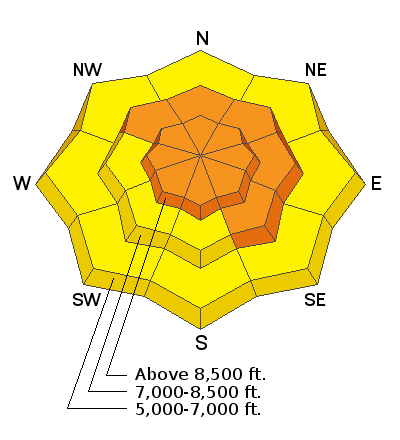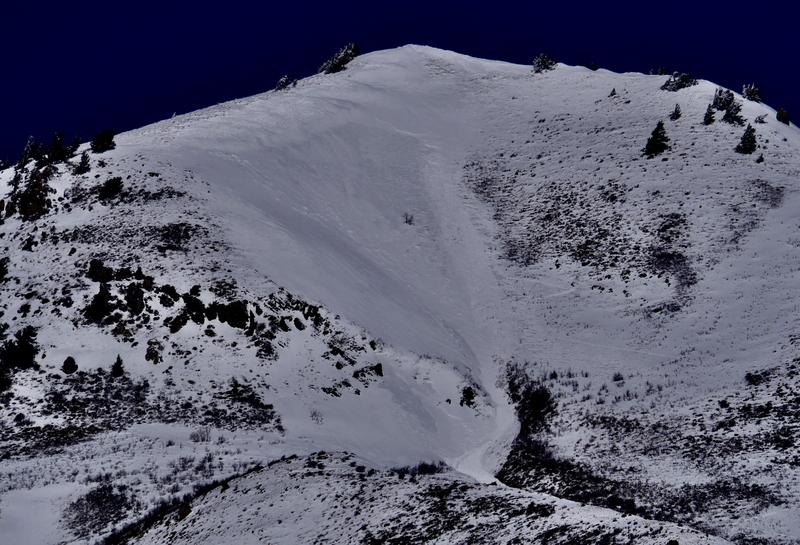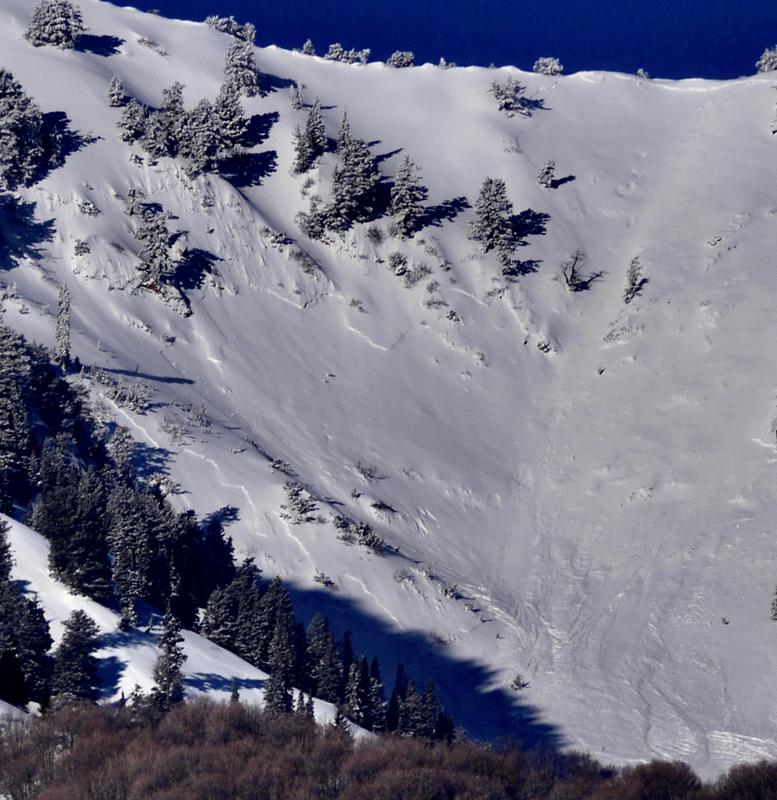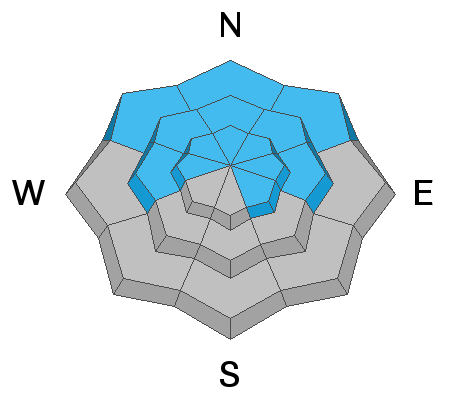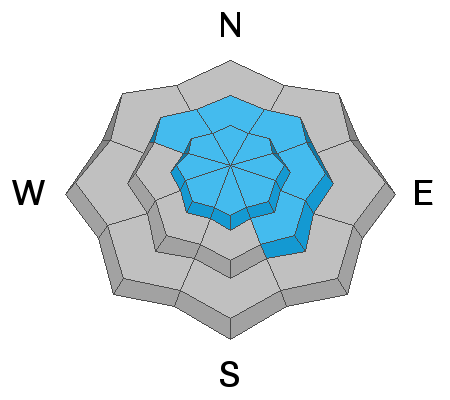Snow is already falling at Beaver Mountain this morning. Heavy snow up high, a chance of rain down low, and blowing snow are expected today, and will cause rising avalanche danger in the backcountry. During the week, copious heavy snow and drifting from fairly strong west winds overloaded slopes with buried persistent weak layers consisting of sugary faceted snow. Natural avalanches were common across the Logan Zone during the storm, dangerous avalanche conditions persist on many slopes, and people could still trigger dangerous avalanches today if they venture into steep terrain.
Snowfall is visible on Beaver Mountains Webcams this morning. The 8400' Tony Grove Snotel reports 34°F, and there is six feet (72 inches) of total snow at the site. Winds out of the south increased overnight and are blowing about 35 mph with gusts in the 50s this morning at the 9700' CSI Logan Peak weather station.
- It will be rather stormy today in the mountains. Expect high temperatures at 8500' around 28°F, with continuing 25 to 30 mph winds, veering from the west. 6 to 10 inches of accumulation is possible on upper elevation slopes today.
- Expect mostly cloudy skies tonight, with 1 or 2 inches of additional accumulation, low temperatures around 14°F, and continuing blustery 14 to 22 mph west winds.
- It'll be nice and sunny tomorrow, with high temperatures around 32°F and 10 to 15 mph west winds.
- Unsettled spring-like weather is expected this week, with the next chance for a few inches of snow around Tuesday night.
- Yesterday, skiers triggered a couple sizable soft slab avalanches on the Millville Face in Providence Canyon. The avalanches at around 8600' in elevation on a north facing slope failed on a sugary persistent weak layer. The largest was 12 to 20" deep and around 300' wide.
- Friday afternoon, a skier was caught and carried around 200' by an avalanche on a southeast facing slope at around 8000' in Rattlesnake Canyon in the Wellsville Mountain Wilderness
- Riders triggered several wind slab avalanches, some remotely, in the Central Bear River Range Thursday and Friday.
- Natural avalanches were common in the Logan Zone during this week's storm, with evidence of some fairly large avalanches visible Thursday with clearing.
- Parties in the Logan Zone continue to report signs of instability in the backcountry, including audible collapsing and cracking in some areas.

The skier who triggered this avalanche yesterday was going so fast they did not even know they had triggered the avalanche until down on the flats at the pick up zone.
A skier was caught and carried around 200' late Friday afternoon by this avalanche in upper Rattlesnake Canyon in the Wellsville Mountain Wilderness.
With clearing on Thursday, we observed lots of natural activity including a couple good sized natural avalanches in the Wellsville Mountain Wilderness, which were quite visible from Cache Valley.
Check out all the recent backcountry observations and many recent avalanche reports from across Utah
HERE 
